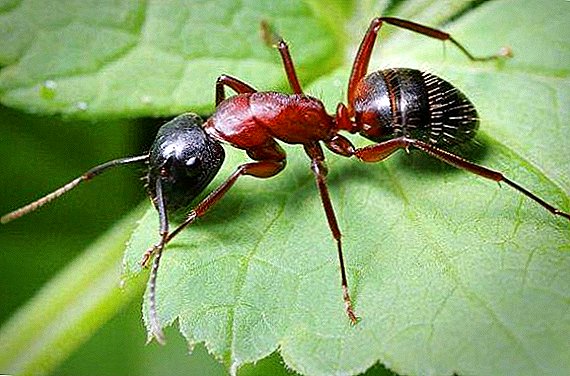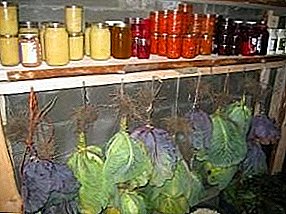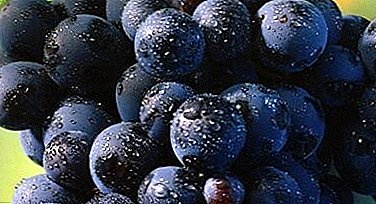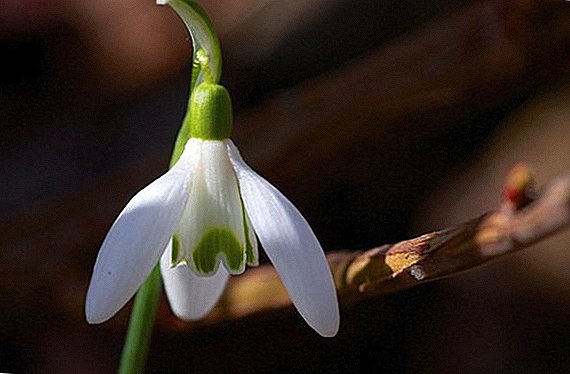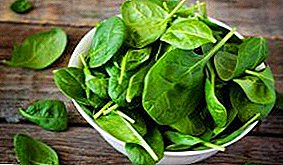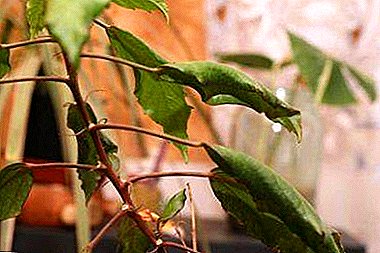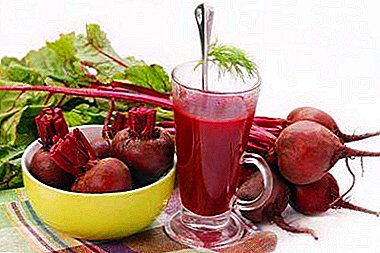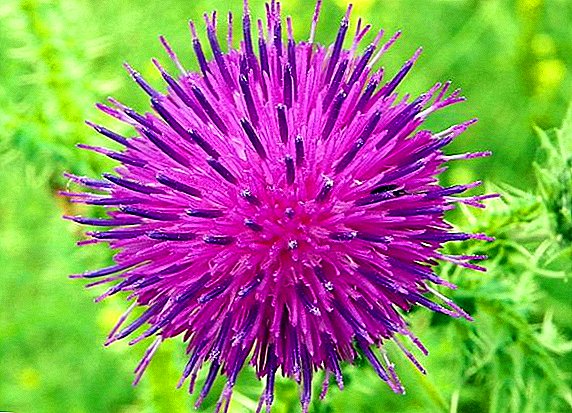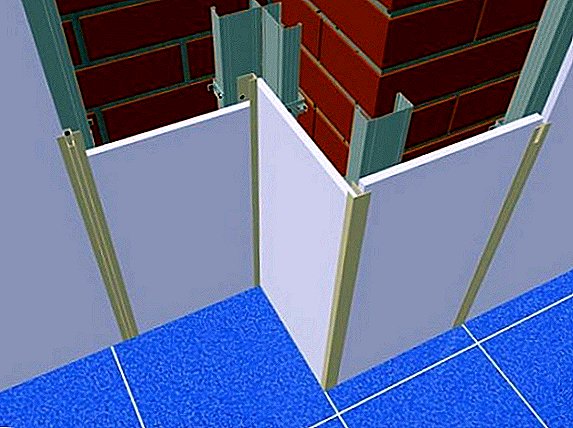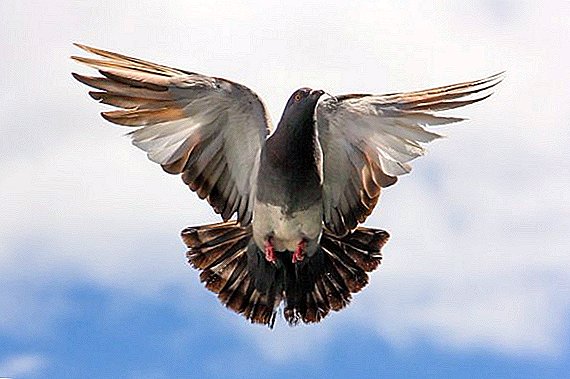 Many pigeon breeders probably have at least a few representatives of this breed in their collection: Nikolaev pigeons differ from their relatives not only in their variety of colors, but also in their style of flight. In addition, their content in the dovecote does not take much trouble. Consider the features of their breeding in the article.
Many pigeon breeders probably have at least a few representatives of this breed in their collection: Nikolaev pigeons differ from their relatives not only in their variety of colors, but also in their style of flight. In addition, their content in the dovecote does not take much trouble. Consider the features of their breeding in the article.
Origin
This breed of high-flying pigeons was bred at the end of the 19th century in the Ukrainian city of Nikolaev. This happened due to the crossing of pigeons, brought by sailors from foreign countries, with a local bird. Such a decision significantly influenced the formation of the rock, since the climatic conditions of the Black Sea coast determined the manner of flight of the birds.
Explore the most popular species and breeds of pigeons, and in particular with peacock pigeons and Uzbek fighting pigeons.

Description and Features
Thick plumage, a streamlined body shape and powerful muscles - these are not all the advantages of a Nikolaev pigeon. Its distinctive feature is the ability to climb up without circles and reach a great height in a short period of time.
Did you know? Nicholas dove is able to hold out in flight for up to 10 hours. Such indicators of the birds are achieved with the correct mode of their content and regular training.
Typically, these birds carry out a single flight, during which they use its various techniques. For example, they can soar with widely spread wings or swing animatedly, sharply rising upwards. 
External characteristics
- Body length: 25-30 cm.
- Plumage: the body can be cherry-red, gray with dark stripes, black, red, white.
- Head: rounded or narrow and oblong.
- Eyes: gray, black or dark yellow. There are circles of dark brown or gray around the eyes.
- Beak: straight and long, white or milky.
- Neck: not long, medium thickness.
- Chest: rounded and convex.
- Wings: each of them has at least 10 feathers that do not lean on the tail and, as a rule, have body color. Speckled pigeons wear at least 5 wing feathers to match the color of the main color.
- Tail: irrespective of the basic color, it is white and includes 12-14 feathers.
- Legs: short and have plumage just above the knee.
- Defects for culling by appearance: ectopus and non-standard plumage.

Features of the structure of the body and flight styles
This breed of pigeons is classified by flight characteristics: end and serpastye. Thus, the first rise is carried out strictly vertically, and flight and landing indicators have deviations within a radius of 5-10 m from the dwelling. Their flight requires windy weather of 7 meters per second. They are most common in the Nikolaev region.
Did you know? By crossing the Nikolaev pigeons in Poland, a new breed was bred, which was called the "Polish Eagle". They are also able to soar in circleless flight.
As for sickles, they fly horizontally, and the deviation from the pigeon house is much greater than that of the end faces, and is 200 m. At the same time, the flapping of their wings should overlap the head or the edge of the tail. A defect for culling during flight and landing is considered to be a slip on the tail and turns in a circle. 
Color
The coloring of the Nikolaev pigeons happens the most various. On their feathers can stand out as an unusual pattern, and a solid color, giving the image of a bird nobility and grace. This color is distributed over the entire area of the pigeon’s body, and individuals that are distinguished by an ashy tint have a certain color in the form of a belt. A bird with this color may have a colored feather in the tail.
Find out the life expectancy of pigeons in the wild and at home, what you can get from pigeons and where you can see pigeons chicks.
A bird with white plumage may have colored specks on its back and shoulders. They are also called "martins". Adult individuals have colored wing wings, which may be brown or black.
The white dove with a speck of color on the nape is called a "hryvnia". The spot may be blue, yellow or red and is called a mane. 
Character
These pigeons have a lively and energetic disposition, easily adapt to the environment and climatic conditions, are distinguished by high vitality, fertile and good-natured. Their care is manifested in the fact that they are responsible for incubating and feeding chicks.
Requirements for the room
First you need to equip dovecote. This room should be very spacious, not have drafts. In addition, the rays of daylight should fall into it. As such housing for birds, you can use the attic. Such an arrangement will allow them to take off from a height, which is an important factor for flight birds.
Certain conditions are necessary for breeding and growing pigeons. Read more tips and tricks for building a dovecote.
Dovecot sizes
For the arrangement of dovecote one should know that 1 pair of small and medium-sized pigeons should be located not less than 0.5 square meters. m. For individuals of large size will need up to 1 square. It is recommended that no more than 15 pairs of pigeons be settled in one room. In addition, the height of the room should be 1.8-2 m, and the size of windows - 1/10 of the total floor area. 
Heat and ventilation
The indoor temperature should be + 5-7 ° C in winter and + 20 ° C in summer. In addition, it is necessary to create good ventilation conditions in the dovecote. To do this, you can use the pipes purchased in the store and install them in the roof of the building, or you can purchase a kit with an existing shutter and fixtures.
Nests and nests
For a safe perch, care should be taken to ensure that each bird has an individual nest. Their size and shape may vary, depending on the breed of the pigeon.
Did you know? The Nikolaev pigeons which live in the city of Mariupol often cannot find the way to the dovecote. This is due to frequent gusts of wind.

Equipping a roost is quite simple: to do this, at a distance of 60 cm from the ceiling it is necessary to fix horizontal bars on which birds can sit. For the arrangement of nests, individual cells can be made and birds can freely access pre-prepared flooring.
Feeding trough, drinking bowl, kupalka
For the successful maintenance of the Nikolaev pigeons it is necessary to equip their housing with a feeding trough and a trough. For ease of use, these devices must be elongated. Thus, a number of eating pigeons can fit behind one feeder.
Experienced poultry farmers should learn how to properly breed pigeons.
In addition, being clean birds, pigeons need regular bathing. To do this, it is necessary to equip a special oblong tank and ensure that it is filled with water several times a week. 
Litter and cleanliness
The basis of keeping Nikolaev pigeons is the purity of the room. In order to maintain it, it is necessary to clean the dovecote once a week, change litters and wash bathing, feeding and drinking tanks. This should be done because the waste products of birds in the process of accumulation emit harmful vapors of carbon dioxide, which can provoke the appearance of diseases.
Feed and water
One of the most important parameters of care is nutrition. So, the Nikolaev pigeons need to be fed by millet or the purified oats, corn, peas, wheat and the vitaminized compound feed with mineral additives.
Important! For feeding you should use flaxseed and rapeseed. This will help keep the plumage soft.

When selecting grain, it is important not to overdo it with the content of protein in it, because it can provoke sexual attraction in birds. In addition, do not overfeed pigeons to prevent obesity. Note that the smallest amount of protein found in cereals. An average adult pigeon needs to consume 70-80 g of feed per day.
In winter, it is necessary to feed the birds with a mixture of oats and barley in a ratio of 1: 3. Also suitable mixture of ground corn, oats, barley and lentils. However, it should be noted that oats and barley are more suitable for the summer period.
It will be helpful to read all about feeding domestic pigeons.
It is not recommended to feed the bird porridge and bread without a mixture of grain, as this can lead to indigestion. In addition, we should not forget about drinking - it is important to ensure that the drinker was always full. 
Training
Before you start training, you should make sure that the bird is completely healthy, it has a clear timetable for food, and living conditions meet the standards.
For high flying pigeons, the presence of wind is very important during the flight. Its strength and speed significantly affect the height and duration of action. Training should begin when the chick reaches one month of age. The first flight attempts should be carried out in an open-air cage, after which you can train to take off from the roof of the pigeon house. The best time of day for this will be early morning. The duration of classes should not exceed 6 hours.
Gradually, the load should be increased so that the bird can cover long distances. 
Common diseases
Pigeons of this breed are subject to some infectious diseases. The main symptoms of their appearance can be:
- lethargy;
- indigestion;
- lack of coordination;
- convulsions;
- refusal of flight.

Important! Experienced breeders make sure that their pets do not develop conjunctivitis, and carry out its prevention, periodically cleaning the organs of vision of birds by washing.
In general, breeding Nikolaev pigeons in a dovecote or in the attic of their own home is not a very difficult task, since the birds of this breed are unpretentious in content. Remember that, like any living creature, pigeons need care and proper care.
Video: Nikolaev pigeons
Reviews from the Internet about Nikolaev pigeons
Lovers of this breed respond and write your reviews.





